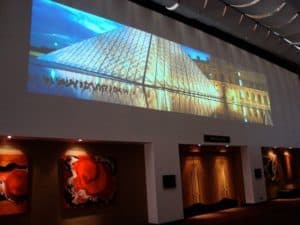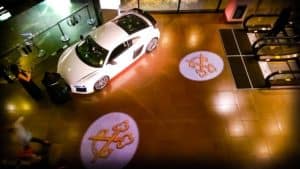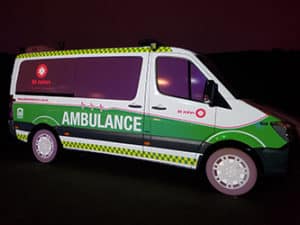Creating excitement and engagement at events can sometimes be a little tricky, especially if people are burying their faces in their smartphones. So if everyone is using their phones anyway, why not make it part of the event?
A good idea to incorporate smartphones into your event is to have a social media wall, harnessing the power of social apps such as Twitter, Instagram and Facebook. This gives all attendees the opportunity to participate and be part of the conversation and fun.
What is a social media wall?
A social media wall is effectively a digital screen or screens which display different social media channels and feeds. You can opt to have your social media wall across multiple screens throughout your event, ensuring many people see it, or have one main one as a large feature wall.
How do they work?
Social media walls work by displaying one or more social media channels and feeds, in real time. You could have the Facebook feed of the speaker on there, the Twitter feed for the event hashtag, or the Instagram feed of the event sponsors. The options are endless!
Here are a few things to keep in mind:
Make sure you #hashtag
You can create an event hashtag that gives your event attendees a way to be a part of the event, so that their posts, photos and updates appear on the social media wall. It fosters a lot of fun and engagement between attendees, and it won’t be long before they are grouped around the screens, excitedly waiting for their post to be shown!
For this to work effectively, you must have a simple and on brand event hashtag, that your attendees can use on their posts so they can easily be found on the various social media channels. Some examples of event hashtags are: #ANZgala2017 #NewtownFestival #JoandTomWedding
Make sure the hashtag is short enough that it doesn’t use up too many characters (especially for Twitter), and not too obscure that it doesn’t read easily or make sense.
Start conversations
You can utilise a social media wall to ask questions at the event, or spark light debate. All attendees can get involved and post their opinions, ideas or replies simply by using the event hashtag.
Update your attendees
You can also use the social media wall for event updates, keeping everyone in the loop and up to date. This is extremely helpful at large trade shows or festivals where information might change throughout the event.
If you’re keen to maximise engagement and interaction at your next event using social media walls, contact us today!


